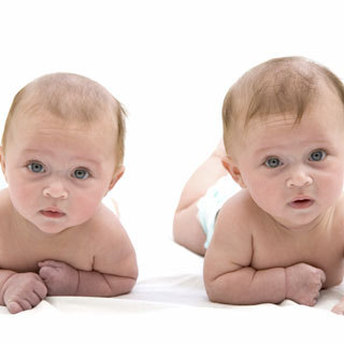Background
Cloning has been around for over 100 hundred years. An example is a set of identical twins they technically clones because they have identical DNA. Another example is with trees in a forest,they all originate from one tree and its roots. As you can see cloning has been around but just recently in the last 25 years has it been attempted to be controlled.
Ian Wilmut at the Roslin Institute in Scotland was assigned to a project in 1986. His goal was to create a sheep that produced a certain chemical in its milk. He chose to alter adult cells, which held up well in laboratory conditions, and then clone them, producing animals with the altered gene all throughout their bodies. He began the paperwork in 1987, and began research in 1990.
One of Wilmut's colleagues, who had experience with cloning from early embryo cells, suggested that the reason so many cloning attempts failed was that the cells were in incompatible stages of life. In one stage, the cells are adding to the DNA, in another, they are proofreading it, and in another, splitting it. The cells, he theorized, could not always start over. Wilmut's team learned that by starving the cells, they could be forced into what is called the G0 phase, similar to cellular hibernation. This advance increased the survival rate of the cloned cells; Megan and Morag, two lambs, were cloned from sheep embryos. Wilmut's team now realized that differentiation did not matter in cloning. More work was done, and on July 5, 1996, a lamb was born, cloned from a frozen mammary cell from another adult sheep. Wilmut, who names his animals very creatively, named her Dolly after Dolly Parton.
Although Dolly was just a step in a long experiment, the press descended upon the first animal cloned from an adult. The Roslin Institute was overrun with journalists and reporters. However, other scientists were critical -- Dolly took 277 tries to create, and other labs were unable to reproduce the results. In addition, it took over a year for the institute to test Dolly's DNA to make sure that it was indeed the same as that of the frozen mammary cells (We Are Making Improvements).Even now to this present day human cloning is still in discussion looking at the odds with experimenting on animals why would society even consider it. The world is a cruel world but doing this type of experiments on humans would be insane.
Ian Wilmut at the Roslin Institute in Scotland was assigned to a project in 1986. His goal was to create a sheep that produced a certain chemical in its milk. He chose to alter adult cells, which held up well in laboratory conditions, and then clone them, producing animals with the altered gene all throughout their bodies. He began the paperwork in 1987, and began research in 1990.
One of Wilmut's colleagues, who had experience with cloning from early embryo cells, suggested that the reason so many cloning attempts failed was that the cells were in incompatible stages of life. In one stage, the cells are adding to the DNA, in another, they are proofreading it, and in another, splitting it. The cells, he theorized, could not always start over. Wilmut's team learned that by starving the cells, they could be forced into what is called the G0 phase, similar to cellular hibernation. This advance increased the survival rate of the cloned cells; Megan and Morag, two lambs, were cloned from sheep embryos. Wilmut's team now realized that differentiation did not matter in cloning. More work was done, and on July 5, 1996, a lamb was born, cloned from a frozen mammary cell from another adult sheep. Wilmut, who names his animals very creatively, named her Dolly after Dolly Parton.
Although Dolly was just a step in a long experiment, the press descended upon the first animal cloned from an adult. The Roslin Institute was overrun with journalists and reporters. However, other scientists were critical -- Dolly took 277 tries to create, and other labs were unable to reproduce the results. In addition, it took over a year for the institute to test Dolly's DNA to make sure that it was indeed the same as that of the frozen mammary cells (We Are Making Improvements).Even now to this present day human cloning is still in discussion looking at the odds with experimenting on animals why would society even consider it. The world is a cruel world but doing this type of experiments on humans would be insane.

